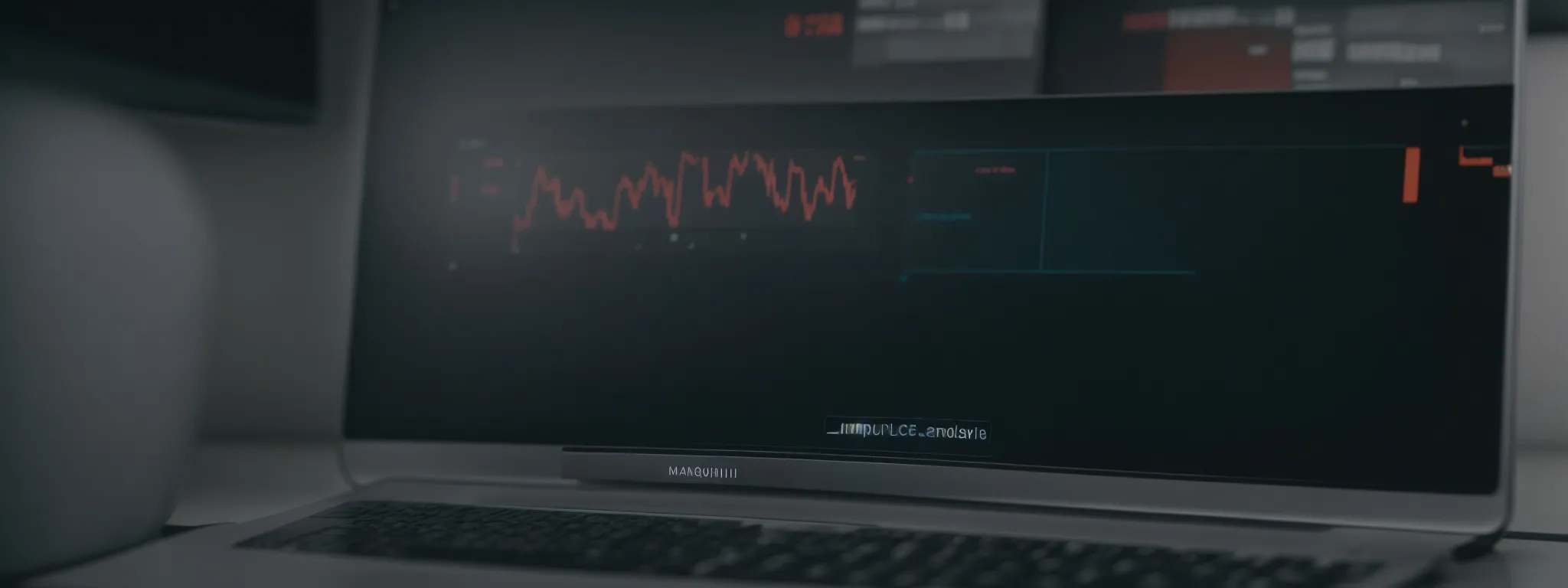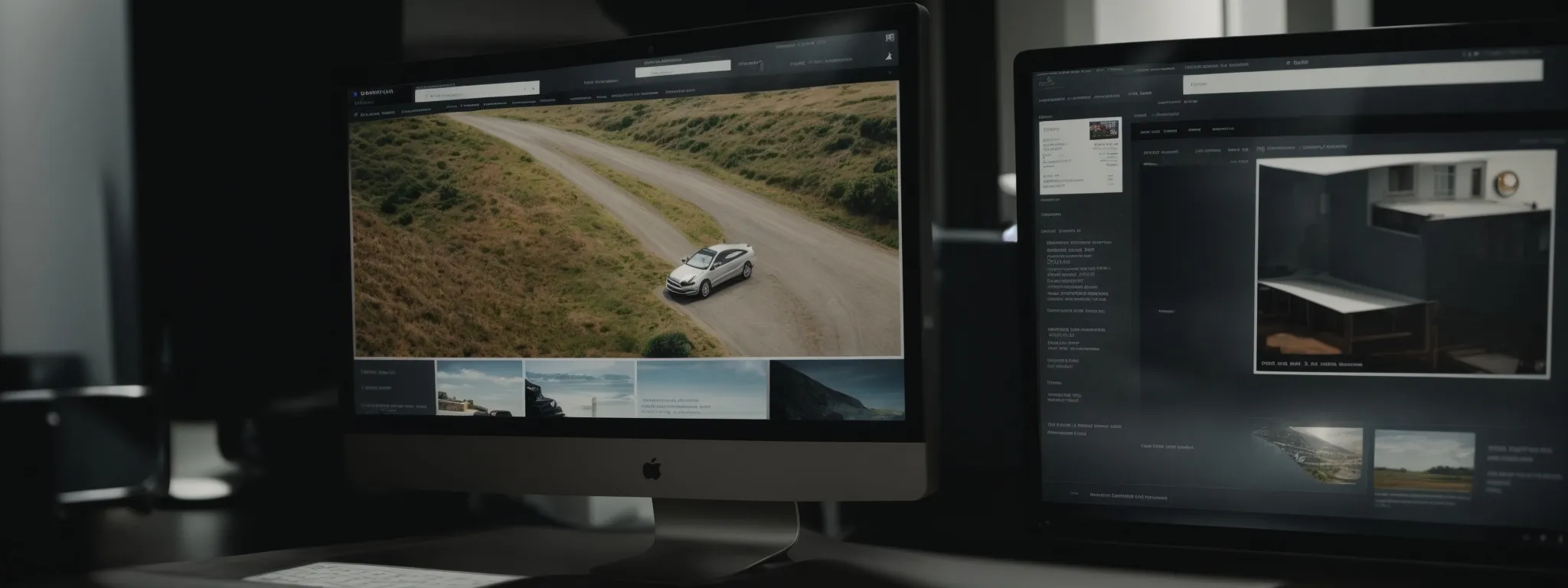Google Core Web Vitals
Mastering Google Core Web Vitals for Website Optimization Navigating the nuanced landscape of SEO requires a deft understanding of Core Web Vitals, a set of Google-driven metrics […]
Mastering Google Core Web Vitals for Website Optimization
Navigating the nuanced landscape of SEO requires a deft understanding of Core Web Vitals, a set of Google-driven metrics essential for web optimization.
Site owners who prioritize these vitals unlock an avenue to refine user experience, potentially boosting their position in search rankings.
From interactivity’s pulse measured by First Input Delay to the visual stability gauged by Cumulative Layout Shift, these metrics orchestrate a symphony of user-centric performance.
For those looking to enhance their site’s UX and SEO performance, mastering Core Web Vitals is not just beneficial; it’s imperative.
Keep reading to unravel the intricacies of these metrics and leverage them for your website’s success.
Key Takeaways
- Core Web Vitals Are Critical Metrics for Evaluating User Experience and Influencing SEO Performance
- LinkGraph’s SEO Services Prioritize Optimizing Core Web Vitals to Enhance Website Health and User Engagement
- Search Atlas SEO Tool Offers Valuable Insights Into Real-User Interactions With Websites to Inform Optimization Strategies
- Stability and Speed Improvements Through Proper Core Web Vitals Management Lead to Better Search Rankings and User Retention
- Case Studies Demonstrate That Optimizing Core Web Vitals Positively Impacts Organic Visibility and Conversion Rates
Understanding the Impact of Core Web Vitals on Optimization

In the realm of digital landscapes, the well-being of a website is intricately tied to its Core Web Vitals—a trio of performance metrics that gauge the health and responsiveness of a web page.
These pivotal benchmarks, which include Largest Contentful Paint (LCP), First Input Delay (FID), and Cumulative Layout Shift (CLS), are not mere indicators of technical proficiency; they resonate deeply with the quality of user experience.
A website’s adherence to these vital metrics influences its ability to meet user expectations and maintain a competitive edge in search engine rankings.
Recognizing the profound link between Core Web Vitals and user satisfaction, LinkGraph’s SEO services Prioritize the Optimization of these key factors to ensure that performance enhancements translate to tangible user engagement and the success of their clients’ online presence.
Defining Core Web Vitals in the Context of Website Health
In the pursuit of optimal web performance, Core Web Vitals have established themselves as the cornerstone metrics for evaluating the efficiency and stability of a website. These vitals encompass Largest Contentful Paint (LCP), which measures the load performance of the page’s primary content; First Input Delay (FID), gauging the responsiveness through user interaction; and Cumulative Layout Shift (CLS), assessing visual stability to prevent unexpected content movement that hinders reading or interaction.
Considered collectively, these Web Vitals are not just abstract figures; they are reflective of real-world user experiences. LinkGraph meticulously applies this data to refine the SEO strategies and Enhance the Overall Health of their client’s web properties, concomitantly aiming to boost organic visibility and drive conversion rates.
The Direct Correlation Between Web Vitals and User Experience
The vitality of Core Web Vitals goes beyond mere metrics; they stand as key indicators of the user’s journey through a website. They reveal, with precise quantification, the delays and disruptions a user may face, highlighting the all-important First Input Delay (FID) as a critical element in the calculus of user satisfaction and retention.
When a visitor encounters an unexpected layout shift, quantified by the CLS score, the frustration experienced can be measured, not just in the increase of a website’s bounce rates, but in the tangible dip in conversion opportunities: a direct testament to the need for stable, responsive interfaces championed by LinkGraph.
| Core Web Vital | Impact on User Experience | SEO Significance |
|---|---|---|
| LCP (Largest Contentful Paint) | Delays in loading main content impede user engagement. | Influences Google ranking as a reflection of page load performance. |
| FID (First Input Delay) | User’s initial interaction latency affects perceived responsiveness. | Essential for user-centric ranking and interactivity assessment. |
| CLS (Cumulative Layout Shift) | Unpredicted content shifts disrupt reading and action paths. | Contributor to Google’s page experience signal, affects bounce rates. |
Dive Into the Three Pillars of Google Core Web Vitals

At the heart of an optimized website lies the mastery of Google Core Web Vitals.
Professionals recognize that to strategically navigate the intricate waters of SEO, it is imperative to comprehend the core tenets of web performance and the user experience they deliver.
In this critical examination, the emphasis is on a triad of essential metrics: Largest Contentful Paint (LCP), which unveils the intricacies of load times for pivotal content elements; First Input Delay (FID), offering insights into the interactivity of a site; and Cumulative Layout Shift (CLS), a measure of visual stability affecting audience retention.
Mastering these variables empowers developers and SEO strategists at LinkGraph with the capacity to elevate web presence through finely-tuned enhancements, ultimately bridging the gap between technical performance and user satisfaction.
Breaking Down the Largest Contentful Paint (LCP)
At the forefront of optimizing website loading efficiency stands the Largest Contentful Paint (LCP), a pivotal indicator of the time it takes for the main content of a page to load and become visible to the user. It is the moment within the page load timeline when the largest text block or image element becomes evident to the viewer, encapsulating the essence of the initial user experience on a given web page.
LinkGraph incorporates analysis of LCP readings to foster strategies that minimize load times, recognizing that protracted loading can disrupt engagement, diminish user satisfaction, and, subsequently, impact search engine rankings. The firm leverages this knowledge to pinpoint areas for technical refinement, ensuring that the visual payload of a site’s most significant content aligns with the imperatives of speed and efficiency.
Demystifying First Input Delay (FID)
Navigating the intricacies of First Input Delay (FID) unlocks the potential for seamless user interactions. LinkGraph’s approach to quantifying FID revolves around capturing the critical juncture between a user’s first interaction—a keystroke, click, or tap—and the browser’s response time to that action, a true test of interactivity and responsiveness.
Adept at discerning the nuances of user experience, LinkGraph utilizes FID metrics to isolate and amend any bottlenecks derailing interaction fluidity. This proactive troubleshooting of user input delays is a cornerstone in LinkGraph’s Strategy to Elevate Their Clients’ SEO Performance, ensuring swift, unobstructed user engagement from the first touchpoint.
Understanding Cumulative Layout Shift (CLS)
Deconstructing the nuances of Cumulative Layout Shift (CLS) is pivotal for practitioners committed to providing a stable and cohesive web experience. CLS marks the sum of all individual layout shift scores for every unexpected layout shift that occurs during the lifespan of a page session, serving as a crucial barometer for gauging the visual stability of site content.
An elevated CLS score can indicate a propensity for content to move around as the page fully renders, disrupting a user’s reading flow or leading to inadvertent clicks. Through meticulous analysis and strategic enhancement of CLS, LinkGraph ensures that website visitors encounter a smooth, cohesive journey, enhancing user satisfaction and supporting robust SEO performance.
Strategies for Improving Largest Contentful Paint (LCP)

In an environment where speed is synonymous with success, refining Largest Contentful Paint (LCP) emerges as a strategic imperative for those committed to optimizing web presence.
Websites striving for superior SEO performance must prioritize their efforts on identifying and improving the factors influencing LCP.
By delving into the technical intricacies that dictate the timing of key content elements becoming fully visible to users, site owners are empowered to deploy calculated techniques that expedite loading times.
The subsequent sections unravel methods that enable digital connoisseurs to hone their craft in augmenting loading speeds, thereby enhancing LCP and, in turn, bolstering the overall user experience.
Identifying Elements That Affect LCP
LinkGraph’s approach to improving Largest Contentful Paint (LCP) commences with pinpointing the elements including heavy image files, dynamic scripts, and bloated web fonts that significantly impede page load performance. By identifying these resource-intensive content elements, the LinkGraph team targets optimizations that specifically address LCP challenges, streamlining the path to enhanced web experiences.
Focused diagnostics using Sophisticated Tools Like LinkGraph’s Search Atlas SEO Suite enable the detection of excessive third-party script impact or server latency issues that contribute to LCP degradation. LinkGraph’s experts evaluate each page’s unique composition to formulate a strategy that reduces load time for the largest contentful paint, effectively lifting the website’s performance score.
Techniques to Enhance Loading Times for Better LCP
LinkGraph harnesses advanced optimization techniques tailored to reduce Largest Contentful Paint times, with a focus on server performance and resource loading. Strategies include compressing images and text files, Leveraging Browser Caching, and utilizing content delivery networks (CDNs) to ensure that the most significant content element loads swiftly and efficiently.
Another critical avenue explored by LinkGraph involves the optimization of client-side rendering through techniques such as code splitting, which allows for only the necessary code to be loaded during a user’s initial visit. This Method, Coupled With the Deferment of non-critical JavaScript and CSS, serves to prioritize the loading of essential content elements, thus optimizing the LCP and enhancing the overall page experience for users.
Tips on Reducing First Input Delay (FID) for Interaction Readiness

In the intricate dance of website optimization, the reduction of First Input Delay (FID) emerges as a pivotal step toward ensuring websites are primed for user interaction.
The fractions of seconds saved during the FID translate directly into a user’s perception of a site’s responsiveness, a fundamental factor in fostering positive web experiences.
Strategists and developers at LinkGraph delve into diagnostic practices to identify the underlying issues that lead to increased FID, meticulously mapping out the pathway for implementing rapid, effective fixes.
This comprehensive approach ensures websites are equipped to respond to user inputs with alacrity, catering to the immediacy that contemporary web users have come to expect.
Diagnosis of Issues Contributing to High FID
LinkGraph’s diagnostic approach to First Input Delay Meticulously Scrutinizes the Event Handlers and interactions that may cause delays in page responsiveness. Through the expert analysis of JavaScript execution times, LinkGraph identifies inefficiencies that obstruct a user’s swift engagement with the page content: a fundamental step towards resolving high FID values.
Uncovering the main culprits responsible for high FID involves a thorough examination of the site’s codebase, looking specifically at the complexity of scripts and the sequence of events during page interaction. By utilizing insights from field and lab data, LinkGraph’s team devises tailor-made solutions for minimizing delays, resulting in an enhanced interaction-ready state for every user.
| Diagnostic Area | LinkGraph Focus |
|---|---|
| JavaScript Execution Time | Analysing and streamlining complex scripts |
| Event Sequence | Optimizing order of interactions for performance gains |
| Insights from Data | Applying real-world metrics to guide optimization strategies |
Implementing Fixes for Rapid Interactive Responses
In response to the intricacies of First Input Delay, professionals at LinkGraph implement a range of effective fixes aimed at enhancing website responsiveness. They tactfully reduce the execution time of JavaScript, a primary factor contributing to user interaction delays, using code deferral and minimization techniques to ensure scripts do not obstruct the user’s initial engagement.
LinkGraph further refines interactive response by optimizing the critical rendering path, thus prioritizing the user’s interactive elements. Through this strategic process, essential scripts are ordered to execute promptly, thereby diminishing the input delay and ensuring the website responds with immediacy to user actions.
Guidelines for Minimizing Cumulative Layout Shift (CLS)

In the pursuit of a superior online platform, the reduction of Cumulative Layout Shift (CLS) stands out as an essential objective, reflecting the stability and reliability that users crave as they navigate a web page.
Site architects and SEO strategists engage in identifying the root causes of layout instability, from fluctuating ad placements to dynamically injected content, tackling these challenges with a battery of best practices.
These measures, designed to cement a consistent vehicular path for digital content consumption, prioritize maintaining a user-centric layout—crucial to fostering an uninterrupted and satisfying user experience.
Causes of Layout Instability and How to Address Them
Layout instability often arises from elements such as images and advertisements that load asynchronously, causing a shift in the content layout as users are interacting with the page. To combat these unexpected shifts, site owners must specify size attributes for media and reserve space for ad units, mitigating shifts when the content finally loads.
Addressing layout instability requires a multifaceted strategy: ensuring text doesn’t cause a layout shift when loading web fonts and eradicating intrusive interstitials that dramatically alter the page layout. By proactively managing these dynamic elements, LinkGraph aids in crafting a stable and predictable user experience, nurturing confidence and comfort in website navigation.
| Element Causing Instability | Strategy to Address |
|---|---|
| Images and Advertisement Without Dimensions | Implement size attributes and reserve space for dynamic content. |
| Web Fonts & Text Elements | Avoid layout shifts by preloading fonts and stabilizing text elements during load. |
| Intrusive Interstitials | Design pop-ups and modals that maintain the underlying content’s layout stability. |
Best Practices for Ensuring a Stable Page Layout
LinkGraph champions the advancement of stable page layouts by instilling practices that safeguard against abrupt content shifts. Emphasis is placed on the structural integrity of page elements during the development phase, ensuring every segment, be it an image or multimedia, is allocated definitive dimensions that prevent content reflows post-initial load.
Through the strategic use of CSS aspect-ratio boxes and appropriate placeholders, LinkGraph underscores the importance of reserving space for dynamic content, such as ads and images, thereby circumventing layout alterations during user interaction. This fortified structure is integral to delivering a consistent and disturbance-free browsing experience, pivotal for maintaining user engagement and optimizing for the Core Web Vitals.
Analyzing Core Web Vitals Using Web Performance Tools

In a market where website performance is synonymous with success, the precise analysis of Core Web Vitals is indispensable for site owners and SEO experts alike.
Navigating this terrain requires a reliable set of tools designed to measure real-world Web Vitals data, offering insight into the user experience delivered by a website.
Grasping the distinction between lab data and field data is fundamental, each serving a different purpose in the spectrum of web performance evaluation.
Professionals rely on this data to make informed decisions, paving the way for meticulous website optimization strategies that align with Google’s best practices and user expectations.
Tools for Measuring Real-World Web Vitals Data
LinkGraph’s suite of SEO services provides experts with powerful tools, like the Search Atlas SEO tool, to evaluate Core Web Vitals. These tools offer a granular view into real-user monitoring (RUM), delivering insights into how actual visitors interact with a website: shedding light on metrics like the First Contentful Paint (FCP), Time to First Byte (TTFB), and Cumulative Layout Shift (CLS) directly from the user’s perspective.
The utility of these performance tools lies in their ability to capture both lab data for predictive diagnostics and field data that reflect live user experience. Understanding the interplay between different device types, network conditions, and geographic locations enables LinkGraph to tailor bespoke strategies for their clients, resulting in a robust and user-centric web performance:
| Core Web Vital | Description | LinkGraph Tool Analysis Application |
|---|---|---|
| LCP (Largest Contentful Paint) | Evaluates page load performance in real-time scenarios. | Search Atlas provides insights on content load delays per user sessions. |
| FID (First Input Delay) | Assesses the interactivity and response time to user input. | LinkGraph tailors optimizations based on interaction-to-next-paint data. |
| CLS (Cumulative Layout Shift) | Measures visual stability and unexpected layout shifts. | Strategies developed from shifts reported during actual page visits. |
Lab Data vs Field Data: Understanding the Difference
When evaluating Core Web Vitals, discerning the distinction between lab data and field data is vital for a comprehensive understanding of a website’s performance. Lab data is generated through simulated testing environments, providing developers with actionable diagnostic information under controlled conditions, allowing for the anticipation of performance issues before they affect real users.
Field data, on the other hand, represents the user experience as it is captured from actual site visits. This empirical data, reflecting varied environmental conditions such as network speeds and device usage, equips site owners with invaluable insights into how users interact with their site in real-world scenarios.
| Data Type | Source | Significance |
|---|---|---|
| Lab Data | Controlled Testing Environments | Enables pre-emptive optimization and debugging. |
| Field Data | Real User Interactions | Reflects genuine user experience for informed decision-making. |
Core Web Vitals as SEO Ranking Factors

In the dynamic ambit of search optimization, Google’s Core Web Vitals have emerged as pivotal ranking factors, molding the contours of SEO performance across the digital sphere.
These user experience metrics serve as a fulcrum, balancing page experience with search result standings, asserting their influence on website visibility and traffic acquisition.
As site owners and SEO professionals navigate the interconnected landscape of web vitals and page rankings, the importance of mastering these elements becomes abundantly clear.
Elevating Core Web Vitals not only improves the user journey but also fortifies a website’s stature within the algorithmic intricacies of search engines, underscoring an indispensable dimension of SEO efficacy.
The Role of Web Vitals in Search Engine Rankings
The search landscape is constantly evolving, and Google’s Core Web Vitals have become an integral component of this transformation, reshaping the SEO performance for countless websites. As crucial indicators of page experience, these vitals are directly factored into Google’s algorithms, affecting a website’s visibility and position within search rankings.
Facilitating a frictionless digital experience is at the heart of LinkGraph’s SEO services, which rigorously fine-tune Core Web Vitals to align with Google’s emphasis on user satisfaction. By enhancing these key metrics, LinkGraph empowers clients with SEO Strategies That Not Only Meet but exceed the benchmarks set by search engines to elevate their online authority and search result prominence.
The Interplay of Page Experience and SEO Performance
The synergy between page experience and SEO performance epitomizes the complex relationship between website design and search engine success. An exceptional page experience captivates visitors, signaling to search engines a site’s commitment to user satisfaction, which is increasingly a component of SEO algorithms.
This ongoing commitment to the user journey fosters a closer alignment with Google’s evolving ranking factors, directly influencing a website’s authority in search results. Quantitative improvements in Core Web Vitals lead to qualitative leaps in user engagement and search ranking ascension:
- Enhanced interactivity reduces bounce rates, as users are more likely to stay engaged with responsive pages.
- Better page stability commands trust and increases the likelihood of repeat visits, reinforcing SEO efforts with loyal user behavior.
- Swift loading times enhance accessibility across various platforms and networks, expanding a website’s reach and search engine favorability.
Case Studies: Success Stories of Web Vitals Optimization

The digital arena is replete with transformative stories where mastering Google’s Core Web Vitals has reshaped the trajectory of a website’s optimization process.
These case studies are not simply tales of triumph; they are testaments to the tangible SEO gains achievable when websites focus on enhancing user experience through vital performance metrics.
The following discourse delves into the insights gleaned from websites that not only achieved marked improvements in their Core Web Vitals but also witnessed a corresponding fortification of their search engine positioning, serving as inspiring learning models and benchmarks for others aspiring to optimize their digital assets.
Examples of Improved Core Web Vitals Reflecting on SEO Gains
In a landscape where user experience commands premium weight in SEO, case studies illuminate the profound impact of optimizing Core Web Vitals on search rankings. Industry analyses reveal that websites which improved their LCP, FID, and CLS not only elevated the user experience but also saw notable enhancements in their organic visibility, carving a direct link between web performance and search engine success.
LinkGraph’s expertise surfaced in a case where a client’s focused effort on reducing Largest Contentful Paint and First Input Delay yielded a jump in search rankings: a performance turnaround that underscored the intrinsic value of prioritizing user experience metrics in SEO strategies. The ability to make data-driven optimizations facilitated by Search Atlas SEO tool translated into a measurable uptick in user engagement and conversion rates:
| Core Web Vital Improvement | SEO Impact | User Engagement Change |
|---|---|---|
| Largest Contentful Paint (LCP) | Rise in search engine rankings | Increased page views and lower bounce rates |
| First Input Delay (FID) | Enhanced visibility on SERPs | Higher click-through and conversion rates |
Learning From Websites That Mastered Core Web Vitals Optimization
LinkGraph’s suite of analytics tools, such as the Search Atlas SEO tool, provides the necessary insights for mastering Core Web Vitals. By studying successful cases, where optimization led to improvement in metrics like LCP and FID, site owners and SEO experts alike uncover strategies that merge technical adjustments with user-centric design philosophies.
Professional analysis of these success stories reveals a pattern: a steadfast focus on delivering a smooth and responsive user experience inevitably leads to higher search rankings and increased visibility. LinkGraph equips its clients with the knowledge and tools to replicate these achievements, ensuring that their sites not only resonate with users but also perform exceptionally in search engine evaluations.
Conclusion
Mastering Google Core Web Vitals is essential for website optimization as it directly influences user experience and search engine rankings.
By focusing on key performance metrics like Largest Contentful Paint (LCP), First Input Delay (FID), and Cumulative Layout Shift (CLS), websites enhance user engagement, reduce bounce rates, and improve conversion rates.
LinkGraph’s SEO tools and strategies, including in-depth diagnostics and tailored optimizations, demonstrate that prioritizing these vitals leads to tangible benefits.
Elevated Web Vitals scores not only contribute to a smoother, more responsive user experience but also boost a website’s visibility and position in search results.
Success stories from various websites confirm that optimizations aimed at improving Core Web Vitals can result in significant SEO gains.
Therefore, investing in the mastery of these metrics is not just beneficial, but pivotal for any website aiming to achieve high performance and competitive advantage in the digital landscape.














































































